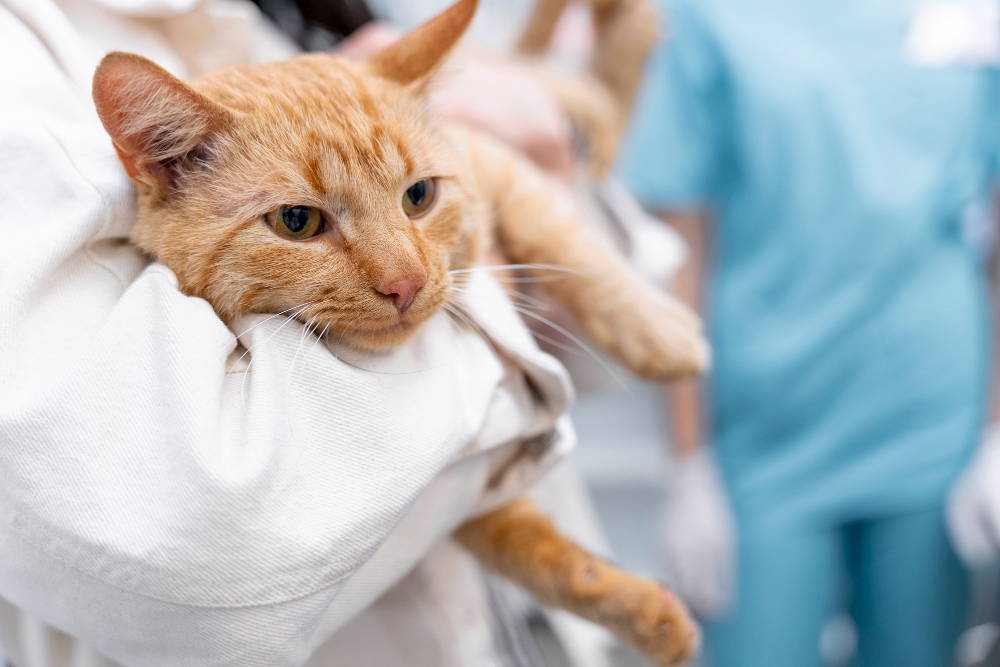Recognizing When Your Beloved Pet Is in Pain

Recognizing When Your Beloved Pet Is in Pain

Few decisions weigh heavier on a pet owner's heart than recognizing when a cherished companion is suffering. Our dogs, cats, and other beloved animals can't tell us directly when they're hurting, making it crucial for us to understand the subtle signs that indicate pain or distress.
As pets age or face serious health challenges, their quality of life can diminish significantly. While we naturally want to hold onto our furry family members as long as possible, sometimes the most loving act is helping them pass peacefully. Understanding the signs of pain and knowing when it might be time to consider end-of-life care can help you make this difficult decision with compassion and clarity.
This guide will help you recognize the warning signs that your pet may be in pain and provide guidance on when it might be time to consider saying goodbye.
Physical Signs Your Pet Is in Pain
Animals are masters at hiding discomfort, an evolutionary trait that helped protect them from predators in the wild. However, careful observation can reveal several physical indicators that your pet is experiencing pain.
Changes in Mobility and Movement
One of the most noticeable signs of pain is altered movement patterns. Your pet may move more slowly, struggle to get up from lying down, or show reluctance to jump onto furniture they once accessed easily. Limping, stiffness, or favoring one side of the body are clear indicators that something is wrong.
Watch for changes in how your pet navigates stairs, gets in and out of cars, or performs routine activities. Dogs may struggle to squat during bathroom breaks, while cats might have difficulty getting in and out of their litter box.
Altered Breathing Patterns
Pain often affects breathing. Rapid, shallow breathing or panting when your pet isn't hot or hasn't been exercising can indicate discomfort. Some pets may also breathe with their mouths open more frequently or show visible effort when breathing.
Changes in Posture
Animals in pain often adopt unusual postures to minimize discomfort. Dogs might stand with a hunched back, keep their head lowered, or assume a "prayer position" with their front legs extended and rear end elevated. Cats may curl up more tightly than usual or lie in positions that seem uncomfortable.
Physical Appearance Changes
Look for signs like excessive drooling, dilated pupils, or a dull, lifeless expression in your pet's eyes. Their coat may become less shiny or well-groomed, especially in cats who typically maintain meticulous grooming habits. Weight loss or gain can also indicate underlying pain or illness.
Behavioral Changes That Signal Distress
Behavioral shifts often provide the clearest picture of your pet's emotional and physical state. These changes can be subtle but are equally important as physical symptoms.
Social Behavior Modifications
Pets in pain may withdraw from family activities, hide in unusual places, or seek excessive attention and comfort. A normally social dog might avoid interaction, while an independent cat might become unusually clingy. Some pets become more protective of certain body areas, growling or snapping when touched in previously comfortable spots.
Sleep Pattern Disruptions
Pain frequently disrupts normal sleep cycles. Your pet might sleep more than usual due to exhaustion from dealing with discomfort, or they may sleep less due to pain preventing rest. Watch for restlessness, frequent position changes during sleep, or difficulty settling down.
Eating and Drinking Changes
Appetite changes are common in pets experiencing pain. Some may eat less due to nausea or difficulty moving to food bowls, while others might eat differently—perhaps swallowing without chewing if their mouth hurts. Changes in water consumption can also indicate various painful conditions.
Elimination Issues
Pets in pain might have accidents in the house, even if they're typically well-trained. This could be due to difficulty reaching their usual bathroom spots, pain during elimination, or side effects from pain medications. For cats, avoiding the litter box or eliminating outside it often signals distress.
When Quality of Life Becomes a Concern
Determining when your pet's quality of life has diminished significantly requires honest assessment of their daily experience. Consider creating a quality of life checklist that includes their ability to enjoy favorite activities, maintain dignity in basic functions, and experience more good days than bad ones.
The Bad Days Outnumber the Good
Pay attention to the ratio of difficult days to comfortable ones. If your pet has more bad days than good, and this pattern continues despite medical intervention, it may be time to consider end-of-life options.
Loss of Interest in Favorite Activities
When pets stop engaging in activities that once brought them joy—whether it's playing fetch, chasing toys, or simply spending time with family—it often indicates that pain or illness is significantly impacting their quality of life.
Difficulty with Basic Functions
If your pet struggles with fundamental activities like eating, drinking, walking, or using the bathroom, and these difficulties aren't improving with treatment, their quality of life may be severely compromised.
Making the Difficult Decision
Deciding when to say goodbye to a beloved pet is deeply personal and incredibly difficult. Consult with your veterinarian about your pet's condition, prognosis, and pain management options. Many veterinarians can provide honest assessments about quality of life and what to expect moving forward.
Consider your pet's personality and preferences. Some animals are fighters who maintain their spirit despite physical challenges, while others seem ready to let go when faced with significant discomfort or limitation.
Creating a Peaceful Farewell
When the time comes to say goodbye, many pet owners find comfort in choosing in home euthanasia services. This option allows your pet to remain in familiar, comfortable surroundings during their final moments, surrounded by the people they love most.
In home euthanasia can reduce stress for both pets and families, eliminating the anxiety of a final car ride and allowing for a more intimate, peaceful farewell. The process is gentle and designed to minimize any discomfort while providing dignity and comfort.
Finding Support During This Difficult Time
Remember that choosing to end your pet's suffering is an act of love, not betrayal. Many pet owners experience guilt, but helping a beloved companion avoid prolonged pain demonstrates the depth of your care and commitment to their wellbeing.
Consider reaching out to pet loss support groups, counselors who specialize in pet bereavement, or trusted friends and family members who understand the bond you shared with your pet. Grief over pet loss is real and valid, and you deserve support during this difficult time.
If you're considering in home euthanasia in Jupiter, FL, contact Rover Veterinary Care today for more information. Their compassionate team understands the difficulty of this decision and can help ensure your pet's final moments are peaceful and dignified.
